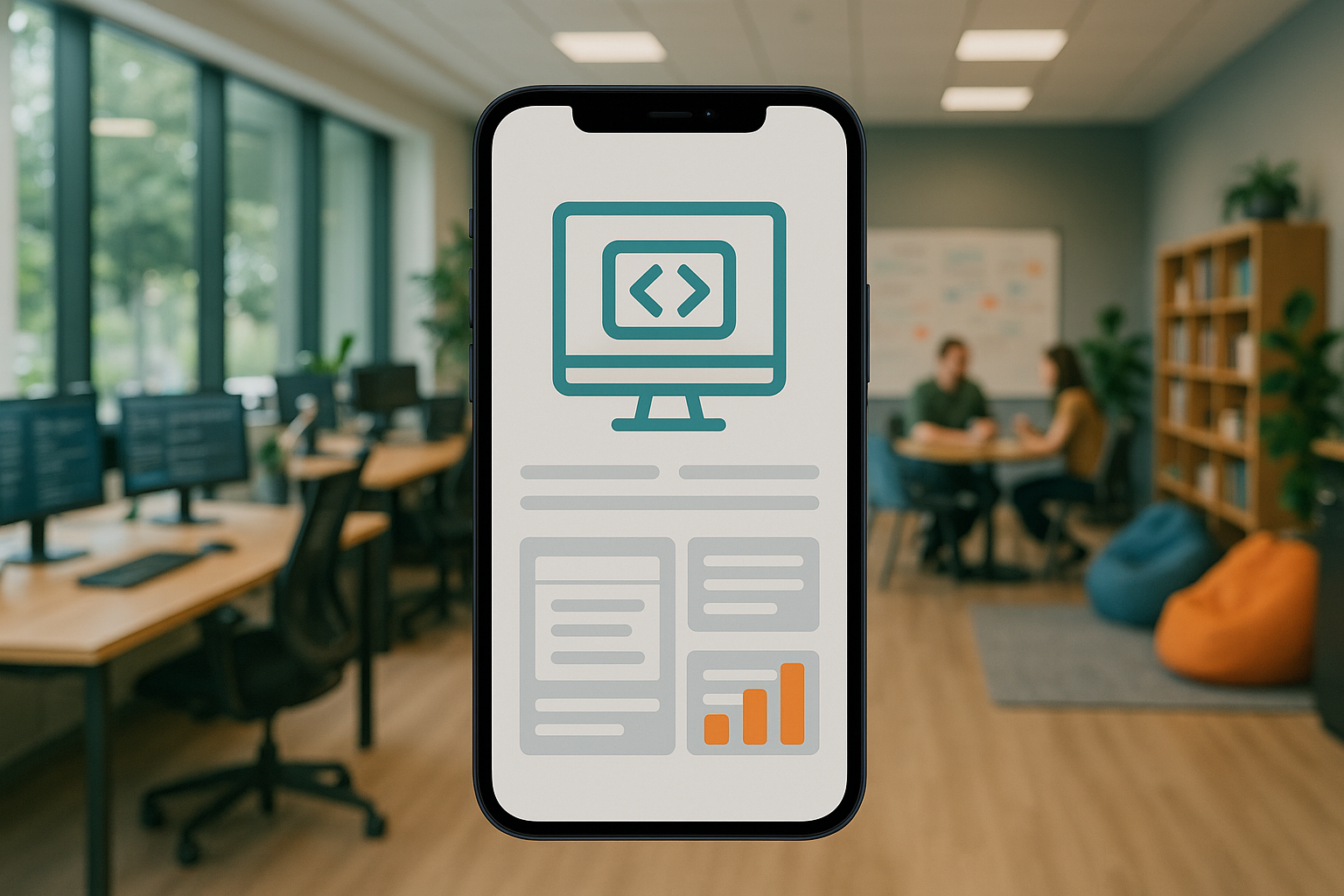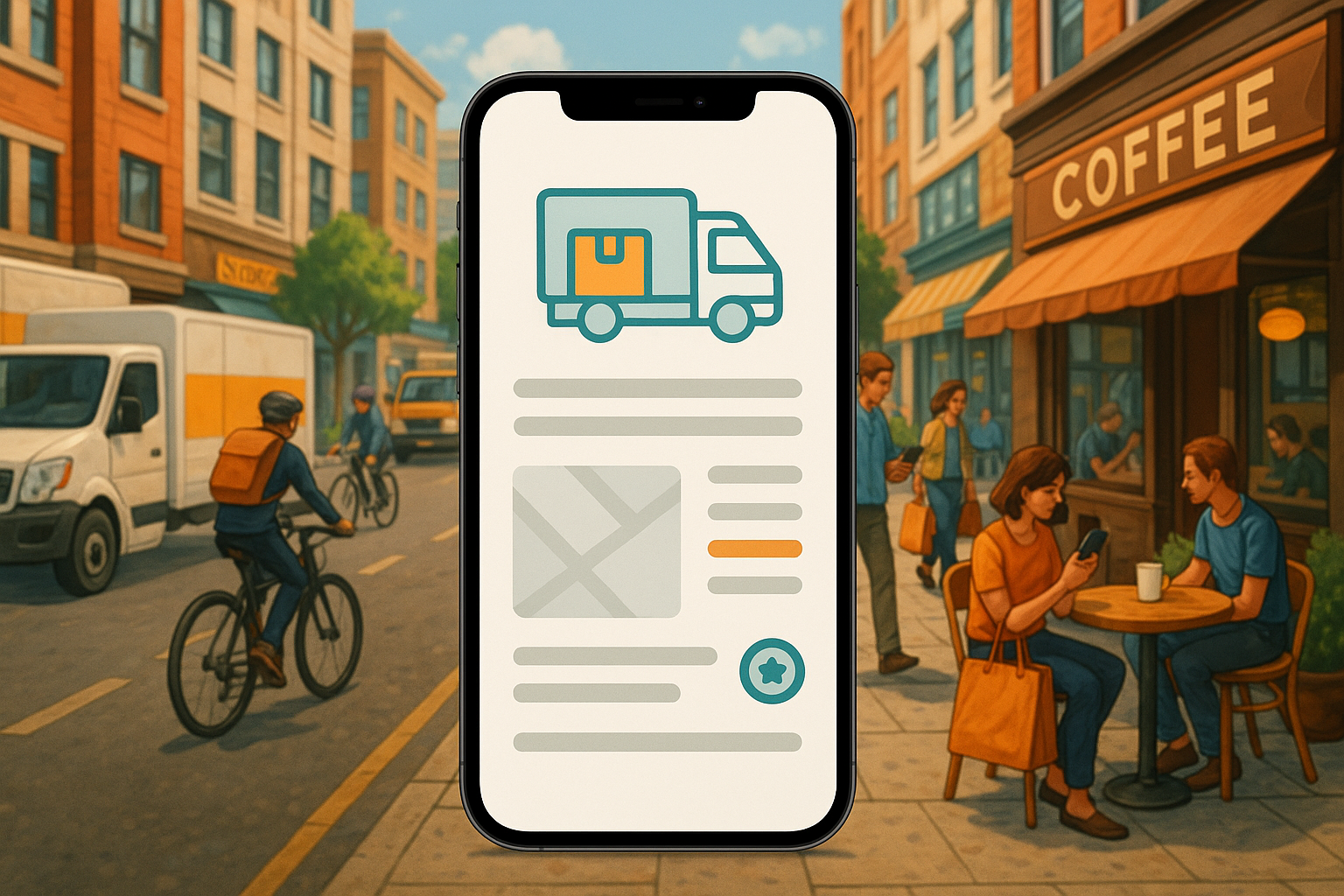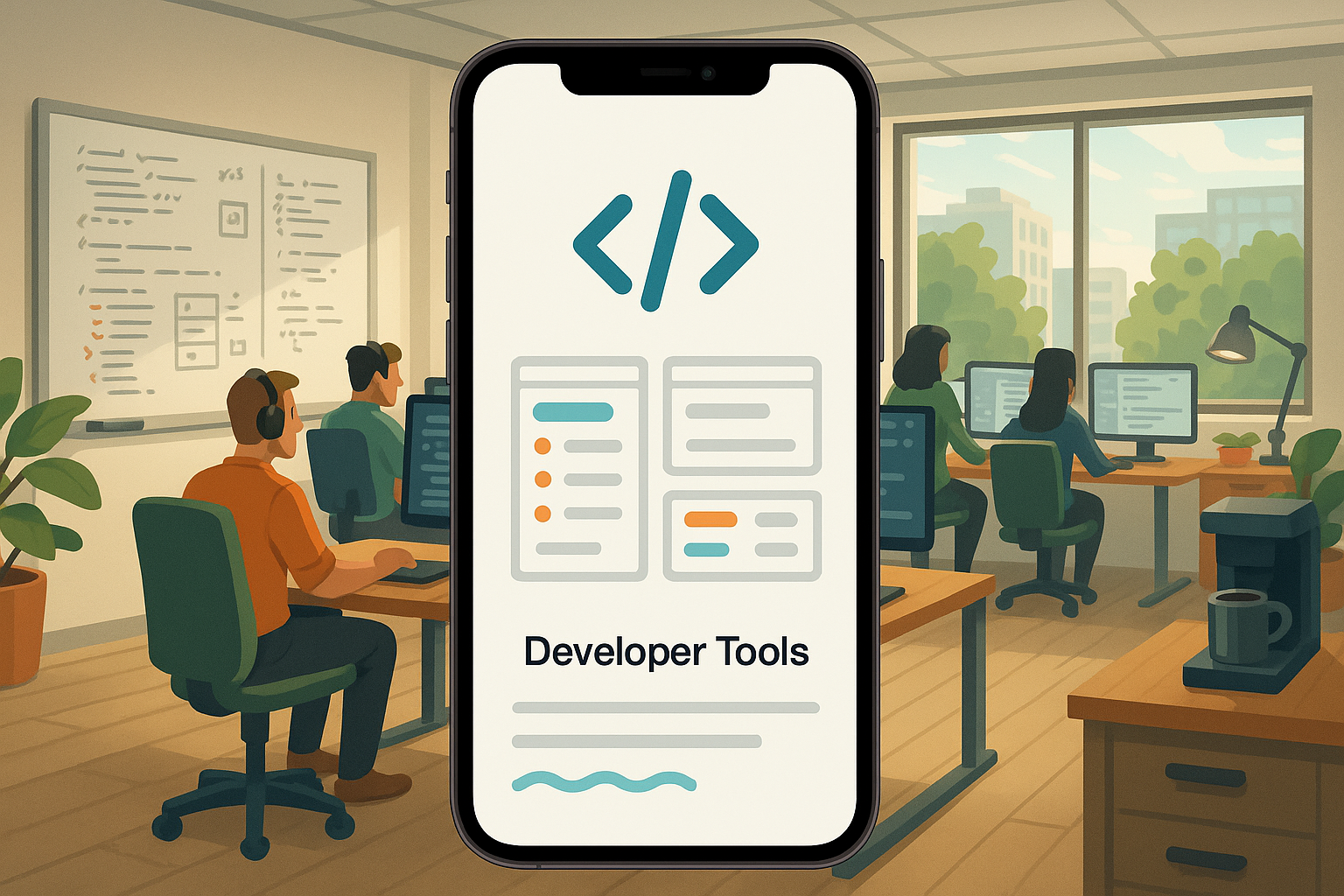Introduction
In an era dominated by mobile and web platforms, the desktop application remains a powerful and indispensable tool for businesses and consumers alike. From sophisticated design software and enterprise-level resource planning systems to specialized productivity tools, desktop apps offer unparalleled performance, deep integration with operating systems, and robust offline capabilities. However, the journey from concept to a fully functional desktop application is fraught with challenges. Developing this kind of software in-house can quickly become a drain on resources, requiring specialized technical expertise, significant financial investment, and a dedicated support infrastructure that many organizations are not equipped to handle.
The complexities of managing updates, integrating with other technologies, maintaining server infrastructure, and training users can derail even the most well-intentioned projects. These hurdles often lead to budget overruns, delayed timelines, and a final product that fails to meet expectations. This is why partnering with a seasoned development firm is not just an option, but a strategic necessity for success.
This comprehensive guide will explore the landscape of desktop application development. We will delve into the specific reasons why in-house development is so difficult, provide a realistic overview of the costs involved, and introduce the top development companies that can bring your vision to life.
As a top US AI-powered app development firm with over 20 years of experience, we at MetaCTO specialize in transforming complex ideas into market-ready products. While our portfolio is rich with successful mobile applications, our core expertise lies in sophisticated software architecture, seamless AI integration, and a disciplined development process that is platform-agnostic. Our proven ability to build, grow, and monetize complex applications translates directly to the desktop environment. We are here to help you navigate the challenges, avoid the common pitfalls, and build a desktop app that is powerful, scalable, and better than you could have imagined.
What is a Desktop App?
Before we dive into the complexities of development, it is essential to establish a clear understanding of what a desktop application is. At its core, a desktop application is a software program that is installed directly onto a personal computer—be it a Windows PC, a macOS machine, or a Linux system—and runs locally on that device’s hardware. Unlike web applications that operate within a browser and rely on a constant internet connection, desktop apps are executed by the computer’s operating system itself.
This fundamental difference gives desktop applications several distinct advantages. They can directly access and utilize the computer’s system resources, such as the CPU, GPU, memory, and file storage. This direct access allows for superior performance, speed, and responsiveness, which is critical for resource-intensive tasks like video editing, 3D modeling, large-scale data analysis, and high-performance gaming. Furthermore, many desktop applications are designed to function partially or fully offline, providing users with uninterrupted access to their tools and data regardless of their connectivity status.
However, these strengths also contribute to their development challenges. Because they are installed locally, they must be compatible with the specific operating system they are built for. This also means that updates are not seamless; users often need to manually download and install new versions to access the latest features or security patches. This process, as we will explore in the next section, can be a significant source of disruption and user friction. The deep integration with the operating system, while powerful, also makes connecting the application to other software, services, and databases a highly technical and complex endeavor.
Reasons It Is Difficult to Develop a Desktop App In-House
Embarking on a desktop application development project with an in-house team may seem like a cost-effective and controlled approach. However, many organizations quickly discover that the path is riddled with significant and often underestimated obstacles. These challenges extend far beyond writing code; they encompass infrastructure, user management, and long-term maintenance. Hiring an experienced development agency like MetaCTO can help you anticipate and solve these problems before they jeopardize your project.
Disruptive and Time-Consuming Manual Updates
One of the most persistent challenges of desktop software is the update process. Unlike web applications that are updated centrally on a server, providing every user with the latest version instantly, desktop applications require users to perform manual updates.
- The Problem: When a new version of your desktop app is released with new features, bug fixes, or critical security patches, each user must be prompted to download and install the update package. This process can be disruptive to a user’s workflow, forcing them to stop their work, wait for the download and installation to complete, and then restart the application. Consequently, many users may choose to ignore or indefinitely postpone updates, leading to a fragmented user base where different people are running various versions of the software.
- The Impact: This fragmentation creates a support nightmare. Your team will have to troubleshoot issues across multiple outdated versions, some of which may contain already-fixed bugs. More critically, users who fail to update may be exposed to security vulnerabilities that have been patched in newer releases, putting their data and your company’s reputation at risk. Building a robust, reliable, and non-intrusive update mechanism is a complex development task in itself, one that requires careful planning and expertise to implement effectively.
Difficult and Complex Technical Integrations
Modern applications rarely exist in a vacuum. To be truly useful, they must communicate and share data with other systems, databases, and third-party services. For desktop applications, this integration is a notoriously difficult task that demands a high level of technical proficiency.
- The Problem: Integrating a desktop app with other technologies, such as a cloud-based CRM, a proprietary database, or various external APIs, is not a straightforward process. It requires deep knowledge of network protocols, data formats, and security standards. Unlike the more standardized environment of web development, desktop development involves working with a wider array of system-level components and potential configurations.
- The Impact: An in-house IT team, even if proficient in web or mobile development, may lack the specific expertise required to build and maintain these complex integrations. A poorly executed integration can lead to data corruption, security breaches, and an unstable application. Successfully connecting a desktop app to the broader technological ecosystem requires specialized developers who understand the nuances of both desktop and backend architecture. This is where partnering with a firm that possesses deep technical expertise, like our team at MetaCTO, becomes invaluable. We can architect and implement robust integrations that ensure your app works seamlessly with the other tools your business relies on. For strategic guidance on building a comprehensive technology roadmap, our Fractional CTO service can provide the high-level partnership you need.
Expensive Server and Data Management
While a desktop application runs on a user’s local machine, it often needs to store, sync, and retrieve data from a central server. The management of this backend infrastructure introduces significant costs and adds a substantial burden to an IT team’s workload.
- The Problem: A desktop application that handles user accounts, shared data, or collaborative features requires a managed server to store this information. This is not a simple file server; it must be a secure, scalable, and constantly maintained piece of infrastructure.
- The Impact: The costs associated with a managed server are multifaceted and recurring. They include the initial setup expense, ongoing hosting fees, regular maintenance and software updates, robust security measures to protect against threats, and a scalable architecture that can handle a growing number of users. This represents a significant operational overhead that many companies fail to budget for. The responsibility for maintaining this server—ensuring its uptime, performance, and security—falls squarely on the IT team, diverting their time and attention from other critical business tasks.
Time-Consuming Onboarding and User Training
The power and complexity of a feature-rich desktop application can be a double-edged sword. Without a clear and effective onboarding process, that very power can make the software intimidating and challenging for new users to navigate, leading to poor adoption and wasted potential.
- The Problem: A desktop application with a dense interface and a multitude of advanced features can overwhelm employees. It is not enough to simply build the software; you must also teach your team how to use it effectively.
- The Impact: This necessitates the development of a detailed and comprehensive training program. Your team will need to create extensive documentation, produce video tutorials, and potentially conduct hands-on training sessions. This effort is time-consuming and requires a skill set that blends technical knowledge with instructional design. If a company invests heavily in developing a complex application but fails to invest in a proper training program, user adoption will suffer. Employees will either avoid the software or use only a fraction of its capabilities, ultimately failing to generate the return on investment the project was intended to deliver. At MetaCTO, we emphasize user-centric design from day one to create intuitive interfaces that minimize the learning curve and reduce the need for extensive training.
Cost Estimate for Developing a Desktop App
Understanding the potential financial investment is a critical step in planning your desktop application project. The cost can vary dramatically based on several key factors, including the application’s complexity, the features it includes, the platforms it needs to support (Windows, macOS, etc.), and the type of development team you choose to hire.
The provided data reveals a wide range of potential costs, reflecting these variables. A simple utility with a single core function will naturally cost far less than a complex, enterprise-grade platform with numerous integrations and a sophisticated user interface. To provide a clearer picture, let’s break down the average cost estimates.
Breakdown of Development Costs
The cost to develop a desktop application is not a single number but a spectrum. The primary drivers are the scope of work and the chosen development partner.
| Development Scenario | Estimated Cost Range |
|---|---|
| Simple Desktop App | $20,000 – $50,000 |
| Complex Desktop App | $50,000 – $200,000+ |
| Using Freelancers | $10,000 – $100,000 |
| Using an Agency | $50,000 – $400,000+ |
Interpreting the Numbers
- Simple Desktop Apps ($20,000 - $50,000): This range typically covers applications with a limited set of features, a straightforward user interface, and minimal to no backend integration. Examples might include a basic file converter, a simple text editor, or a single-purpose calculator.
- Complex Desktop Apps ($50,000 - $200,000+): This category encompasses more sophisticated software. These applications often include features like user accounts, database integration, real-time data synchronization, advanced reporting and analytics, and complex user workflows. Enterprise software, content creation tools, and specialized scientific applications would fall into this bracket. The ”+” indicates that for extremely complex systems, the cost can easily exceed $200,000.
- Hiring Freelancers ($10,000 - $100,000): While the initial price tag for freelancers can seem lower, this route comes with its own set of challenges. You will be responsible for vetting, hiring, and managing individual developers, coordinating their work, and ensuring quality control. While it can be a viable option for smaller, well-defined projects, it carries a higher risk of miscommunication, delays, and inconsistent quality for more complex applications.
- Hiring an Agency ($50,000 - $400,000+): Partnering with a development agency like MetaCTO represents a comprehensive, end-to-end solution. While the initial investment is higher, an agency provides a complete team of experts: project managers, UI/UX designers, developers, and quality assurance engineers. This integrated approach ensures a cohesive strategy, streamlined communication, and a higher level of accountability. The agency model is best suited for businesses looking to build a robust, scalable, and market-ready product without the overhead of managing a disparate team.
At MetaCTO, we focus on delivering maximum value and mitigating financial risk. Our Rapid MVP Development service is designed to launch a streamlined version of your app in 90 days or less. This allows you to test your core concept, gather real user feedback, and validate your business model before committing the full budget required for a complex build-out.
Top Desktop App Development Companies
Choosing the right development partner is arguably the single most important decision you will make for your project’s success. A top-tier company brings not only technical skill but also strategic insight, proven processes, and a commitment to quality. Clutch, a leading global marketplace of B2B service providers, is a trusted resource for identifying industry leaders based on verified client reviews and in-depth analysis. To even be considered for a top list, a company must meet a high standard of client satisfaction, such as maintaining a minimum Clutch rating of 4.8 stars.
Based on these high standards, here are some of the top desktop application development companies in the industry.
1. MetaCTO
As a premier AI-powered development firm in the US, we at MetaCTO bring over two decades of experience in building, launching, and scaling sophisticated software products. With a 5-star rating on Clutch, we have a proven track record of transforming ambitious ideas into successful, revenue-generating applications.
While we are widely recognized for our award-winning custom mobile app development, our foundational expertise is in creating complex, scalable software architecture—the very backbone of any powerful desktop application. Our disciplined process, which takes a project from validation and design to building, growing, and monetization, is platform-agnostic. We excel at tackling the core challenges that derail in-house projects, from designing intricate backend systems and implementing cutting-edge AI features to creating intuitive user experiences that drive adoption. Our approach is not just about writing code; it’s about building a strategic asset for your business. We partner with you to ensure your desktop application is not only technically sound but also perfectly aligned with your business goals.
2. Brainhub
Recognized by Clutch as a Top 1000 Global Company, Brainhub has established itself as a formidable player in the software development space. The company holds an impressive average review rating of 4.9 stars on Clutch from 47 reviews, a testament to their consistent delivery of high-quality solutions and excellent client service.
3. Taazaa
Taazaa stands out with a perfect 5.0-star rating on Clutch across 28 reviews. This exceptional score highlights their unwavering commitment to client satisfaction and their ability to deliver projects that meet or exceed expectations. Their perfect rating indicates a strong focus on communication, reliability, and technical excellence.
4. CheesecakeLabs
CheesecakeLabs has earned significant recognition from Clutch for its development prowess. In 2021, Clutch identified the firm as the 5th best React Native development company and the 10th best global mobile app development company overall. They maintain a high standard of quality, reflected in their 4.9-star rating on Clutch from 56 reviews.
5. TXI
Clutch has recognized TXI as an industry leader for their exceptional software development abilities. Their long-standing reputation for quality and innovation is backed by a large volume of positive feedback from clients. TXI boasts a strong 4.9-star rating on Clutch based on 50 reviews.
6. Future Processing
Hailing from a strong European tech hub, Future Processing was listed by Clutch as one of the Top Developers from Poland in 2022. Their expertise in handling complex software projects is well-regarded by their clients, earning them an average rating of 4.7 stars on Clutch from 48 reviews.
7. Tapptitude
With a remarkable 4.9-star rating on Clutch from 65 reviews, Tapptitude has one of the highest volumes of positive feedback on this list. This extensive social proof underscores their reliability and their consistent ability to deliver successful products for a wide range of clients.
8. Vincit
Vincit has earned multiple accolades from Clutch, securing spots on lists for the Best and Brightest B2B Firms as well as Top B2B Companies from California. These awards, combined with their 4.8-star rating on Clutch from 33 reviews, position them as a leading development partner in the competitive US market.
9. Miquido
Miquido demonstrates strong performance and client satisfaction with an average Clutch rating of 4.9 stars from 48 reviews. Their solid reputation is built on delivering innovative and reliable software solutions, making them another top contender in the application development field.
10. Netguru
Netguru has a long history of client success, as evidenced by their 4.8-star rating on Clutch from a substantial 69 reviews. This large number of reviews points to a wealth of experience across many projects and a consistent ability to meet client needs in the fast-paced world of software development.
11. 10Pearls
Having received recognition from Clutch for their work, 10Pearls is another highly-rated firm in the development space. They hold an excellent average rating of 4.9 stars on Clutch from 36 reviews, reflecting their commitment to quality and their ability to forge strong, positive relationships with their clients.
Conclusion
The development of a desktop application is a significant undertaking, one that promises immense power and utility but comes with a unique set of formidable challenges. As we have explored, building in-house requires navigating the complexities of manual updates, difficult technical integrations, expensive server management, and time-consuming user training. The financial investment is also substantial, with costs varying widely based on the project’s scope and the chosen development model.
Making the right choice of a development partner is paramount. An expert agency does more than just write code; they provide the strategic guidance, technical architecture, and project management needed to navigate these obstacles successfully. They transform the development process from a high-risk venture into a predictable, managed journey toward a superior product.
At MetaCTO, we specialize in exactly that. Our end-to-end process, honed over two decades and more than 120 successful projects, is designed to de-risk your investment and accelerate your time to market. From our initial strategy sessions and rapid MVP development to full-scale build, launch, and growth, we are with you every step of the way. We bring our deep expertise in AI, monetization, and scalable software architecture to every project, ensuring your desktop application is not only functional but also a powerful engine for your business’s success.
Don’t let the challenges of desktop development hold your vision back. Transform your idea into a powerful, market-ready application.
Talk with a Desktop app development expert at MetaCTO today.






